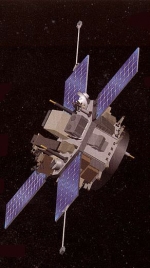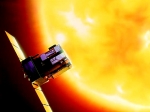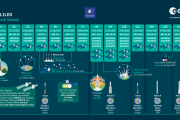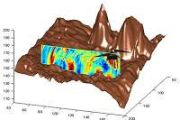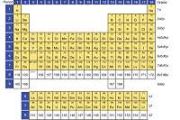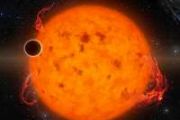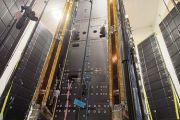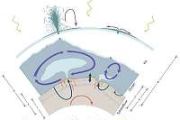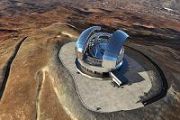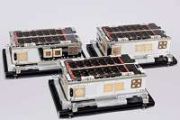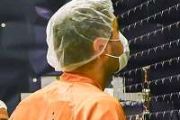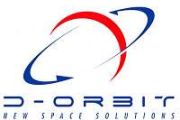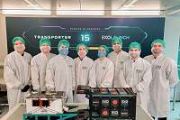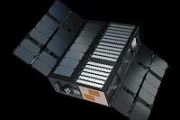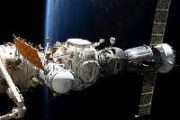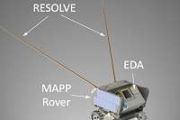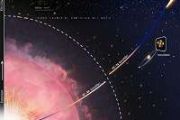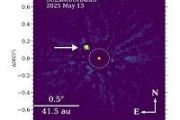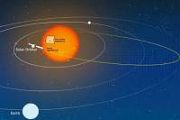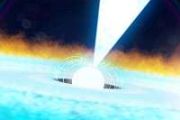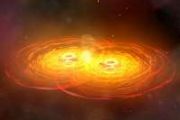Displaying items by tag: Sun
Advanced Technology Solar Telescope (ATST)
The Advanced Technology Solar Telescope (ATST) is a large domed solar telescope facility that is planned to be built by the National Solar Observatory atop the Haleakala volcano on the Pacific island of Maui, Hawaii, USA. The site was selected for its clear daytime atmospheric seeing conditions, which will enable study of the solar corona. The ATST enclosure will house a 4-meter diameter solar telescope capable of observing objects on the Sun that are 30 km across.
The ATST aims to resolve the fundamental interactions between solar magnetic fields and the dynamic atmospheric plasma on scales below 0.1 arcsec over entire active regions.
The ATST is a collaboration of 22 institutions, reflecting a broad segment of the solar physics community.
National Solar Observatory (NSO)
the National Solar Observatory is an American observatory operated by the association AURA.
The mission of the National Solar Observatory is to advance knowledge of the Sun, both as an astronomical object and as the dominant external influence on Earth, by providing forefront observational opportunities to the research community. The mission includes the operation of cutting edge facilities, the continued development of advanced instrumentation both in-house and through partnerships, conducting solar research, and educational and public outreach.
ACE (spacecraft)
Advanced Composition Explorer (ACE) is a NASA space exploration mission being conducted as part of the Explorer program to study matter in situ, comprising energetic particles from the solar wind, the interplanetary medium, and other sources. Real-time data from ACE is used by the Space Weather Prediction Center to improve forecasts and warnings of solar storms. The ACE robotic spacecraft was launched August 25, 1997 and is currently operating in a Lissajous orbit close to the L1 Lagrange point (which lies between the Sun and the Earth at a distance of some 1.5 million km from the latter). The spacecraft is still in generally good condition, and has enough fuel to maintain its orbit until 2024. NASA Goddard Space Flight Center managed the development and integration of the ACE spacecraft.
Instrumentation
- Cosmic Ray Isotope Spectrometer (CRIS): CRIS determines the isotope composition of galactic cosmic rays. It is designed to be sensitive enough to detect isotopes up to the range of zinc (Z-30).
- ACE Real Time Solar Wind (RTSW).
- Solar Wind Ion Mass Spectrometer (SWIMS) and Solar Wind Ion Composition Spectrometer (SWICS): These two instruments are time-of-flight mass spectrometers, each tuned for a different set of measurements. They analyze the chemical and isotopic composition of solar wind and interstellar matter.
- Ultra-Low Energy Isotope Spectrometer (ULEIS): ULEIS measures ion flux and is sensitive to a range from helium through nickel to determine the makeup of solar energetic particles and the mechanism by which the particles become charged by the sun.
- Solar Energetic Particle Ionic Charge Analyzer (SEPICA): As of 2008, this instrument is no longer functioning due to failed gas valves.
- Solar Isotope Spectrometer (SIS).
- Solar Wind Electron, Proton and Alpha Monitor (SWEPAM).
- Electron, Proton, and Alpha-particle Monitor (EPAM).
- Magnetometer (MAG).
SOHO (mission & spacecraft)
The Solar and Heliospheric Observatory (SOHO) mission purpose is to study the Sun from a point of gravitational balance.
The SOHO spacecraft has been built by a European industrial consortium led by Matra Marconi Space (now Astrium) that was launched on a Lockheed MartinAtlas IIAS launch vehicle on December 2, 1995 to study the Sun, and has discovered over 2100 comets. It began normal operations in May 1996.
It is a joint project of international cooperation between the European Space Agency (ESA) and NASA. Originally planned as a two-year mission,SOHO currently continues to operate after over fifteen years in space. In October 2009, a mission extension lasting until December 2012 was approved.
In addition to its scientific mission, it is currently the main source of near-real time solar data for space weather prediction. Along with the GGS Wind and Advanced Composition Explorer (ACE),SOHO is one of three spacecraft currently in the vicinity of the Earth-Sun L1 point, a point of gravitational balance located approximately 0.99 astronomical unit (AU)s from the Sun and 0.01 AU from the Earth. In addition to its scientific contributions, SOHO is distinguished by being the first three-axis-stabilized spacecraft to use its reaction wheels as a kind of virtual gyroscope; the technique was adopted after an on-board emergency in 1998 that nearly resulted in the loss of the spacecraft.



